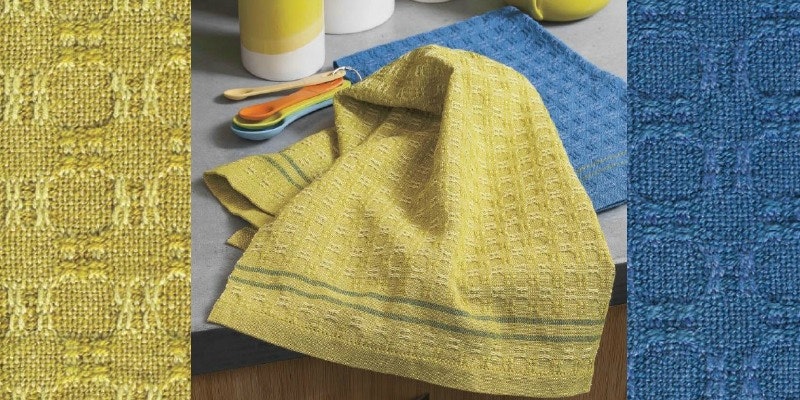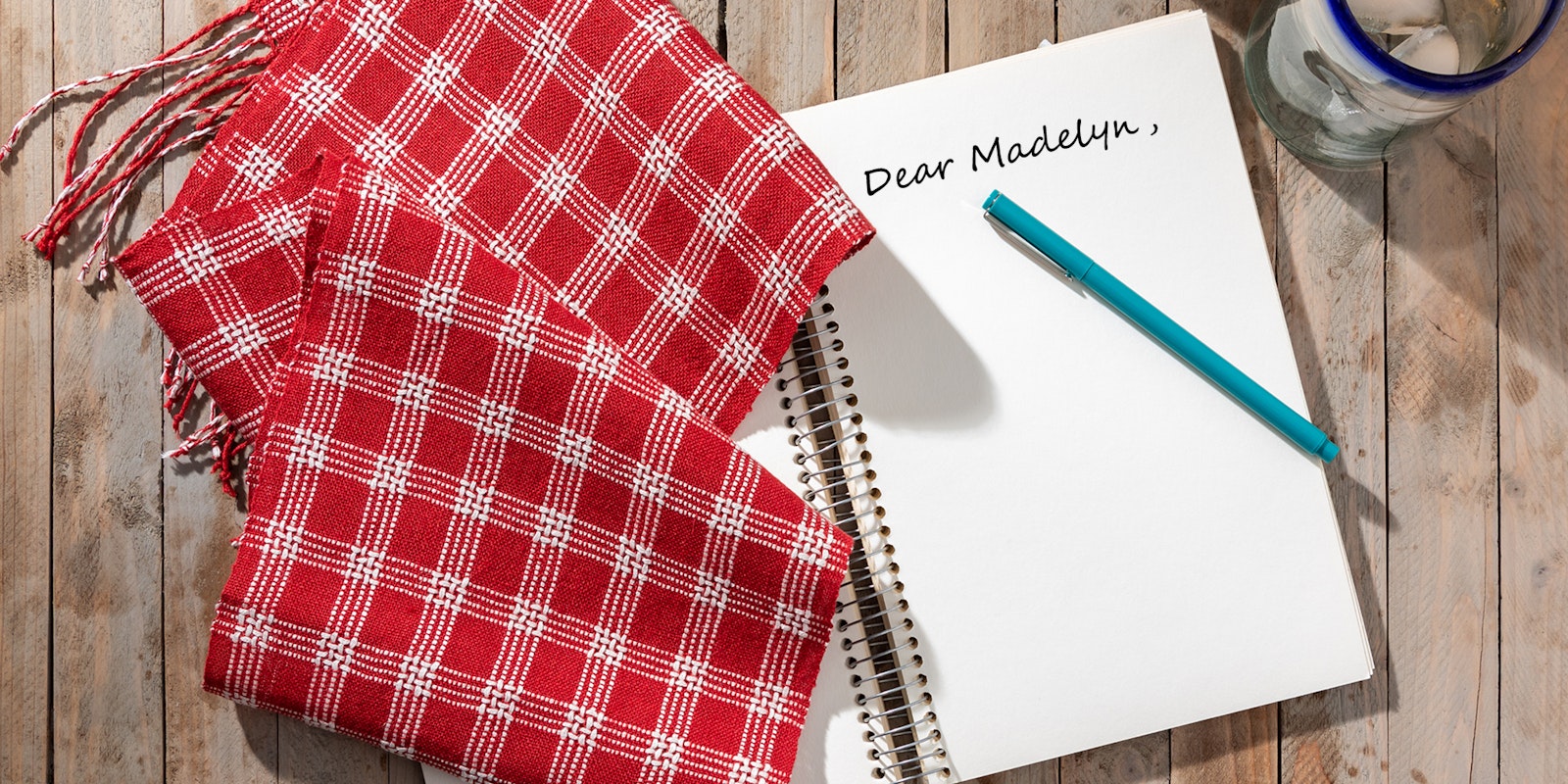Dear Madelyn,
I have woven mostly scarves and am looking to start weaving towels. The issue is: I have no idea what structure to pick. There are drafts available in almost every structure from plain weave to waffle weave, huck lace to twill! However, there’s not a lot of information on why to pick each one (or at least I can’t find a side-by-side comparison). What are the pros and cons of different structures for towels? Which are most absorbent? Which dry the fastest?
—Jacqueline
Hi, Jacqueline!
First, we’ll assume you mean kitchen towels—a favorite project for weavers. (In looking through the last ten years of Handwoven issues, for example, I found that very, very few did not include at least one towel project.) Kitchen towels are rectangular, not wider than most looms, easy to finish (only hems), and can be woven in materials that are commonly available in an amazing number of colors. Moreover, they provide a wonderful palette for playing with structure, color, and texture.
There are two important factors that influence a towel’s absorbency (a quality you usually hope to find in a towel): the weave structure and the materials. The best weave structures are those with floats: twills and waffle weaves, spot and lace weaves, supplementary warp and weft weaves, deflected doubleweave. Plain weave can provide a relatively absorbent towel, but threads that float tend to untwist a bit, especially with washing, increasing their absorbency. I can’t think of a reason other than personal preference to pick one of those structures over another.

The floats in Deanna Deeds’s Pure Deligh Towels help make them extra absorbent. Photo credit: Joe Coca
For materials, cotton, cottolin, and linen work best. They are most absorbent if loosely spun and, for cotton, unmercerized. The favorite yarns of weavers for towels, by far, are 8/2 unmercerized cotton and 22/2 cottolin. We do use 10/2 pearl cotton for towels, but it is not nearly as absorbent as 8/2 unmercerized cotton. Linens can be so tightly spun that their absorbency is diminished.
Here are some examples of towel projects in Handwoven:
- Pure Delight Towels by Deanna Deeds, January/February 2015; Atwater-Bronson lace, 22/2 cottolin.
- Danish Rosette Towels by Elisabeth Hill, May/June 2015; deflected doubleweave, 22/2 cottolin.
- Waffle-Weave Dishcloths and Towels by Dianne Totten, March/April 2002; waffle weave, 8/2 unmercerized cotton.
- In Celebration of Friendship Towels by Sarah Jackson, September/October 2016; polychrome crackle, 8/2 unmercerized cottton.
- Bright Herringbone Twill Towels by Linda Gettmann, September/October 2014; twill, 8/2 unmercerized cotton.
I hope this helps!
—Madelyn

